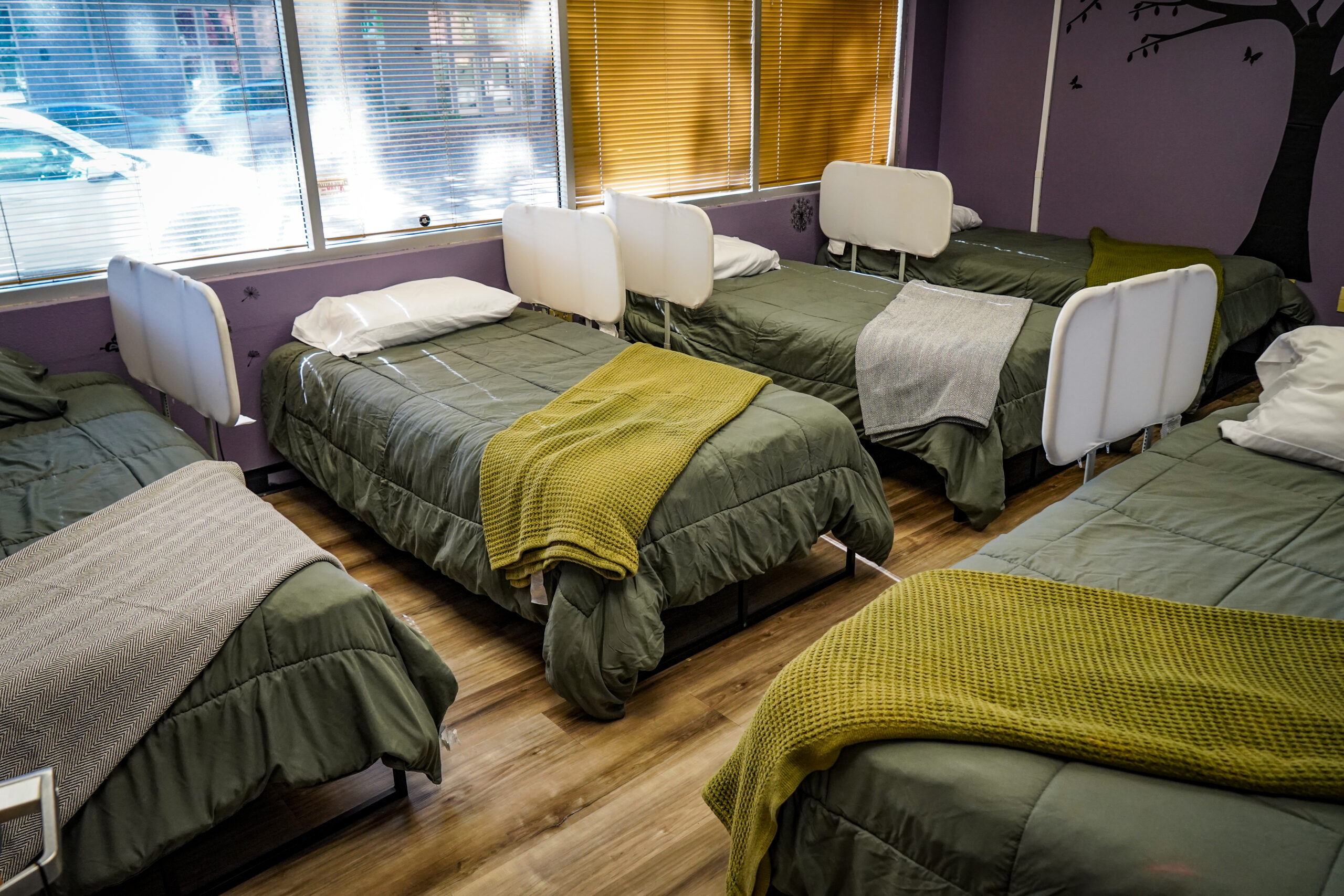The Abridged version:
- Nearly 19,000 public K-12 students in the Sacramento region experienced homelessness sometime during the 2023-24 school year.
- The region’s homeless students are largely concentrated in school districts with high rates of poverty.
- A disturbing number of homeless youth are also victims of human trafficking, homeless services official says.
Nearly 19,000 public K-12 students in the Sacramento region experienced homelessness sometime during the 2023-24 school year, the latest state data show.
That’s roughly equivalent to the combined enrollment of the eight largest traditional high schools in the region.
The students were identified after a pair of 2021 state laws required school districts to increase their efforts to find homeless students and administer a housing questionnaire to families in their districts.
Following the passage of those laws, the number of reported homeless students in the Sacramento region — Sacramento, Yolo, El Dorado and Placer counties — rose by 5,900, or 45%, compared to 2019-20, according to data that local school districts submitted to the California Department of Education.
“A lot of the homelessness that was not evident became evident when the parents filled out the questionnaires,” said Sacramento County Superintendent of Schools Dave Gordon.
The sheer number of homeless students in the region presents massive challenges to their families, their teachers and their school districts.
The region’s homeless students are largely concentrated in school districts with high rates of poverty. A disproportionate number of homeless students identify as Black or Native American.
Students in motels, tents, cars and ‘doubled up’
The large majority of homeless students in the area are “temporarily doubled up” — they share housing with others until their family can find a permanent place to stay.
“There’s too many people in the household,” said Lornetta Brown, director of programs and operations at Wind Youth Services, which provides services to homeless youth in Sacramento. “It’s like 12 people to a one bedroom or two bedrooms.”
But about 1,350 of the region’s homeless students were living in motels; an additional 1,500 were living in shelters and about 840 were unsheltered in cars, tents or otherwise living on the street.
Many homeless students live in families recovering from a financial or personal crisis — an often difficult task in a region where $2,000 monthly rents are the norm, experts and officials say.
“It’s a mixture of the family being displaced due to the cost of living,” Brown said. “It’s also a combination of the family dynamics of neglect, abuse.”
Miren Hower, chief executive officer at Wind Youth Services, added, “We don’t have enough housing, and people don’t have access to it.”

Focus on school attendance and mental health
Efforts to help homeless students largely focus on making sure they attend school and that they receive necessary mental health care, Gordon said.
The Sacramento County Office of Education has used Medi-Cal, the state’s public health insurance program for low-income residents, to place mental health teams in schools across the area.
Many people who experience homelessness have had significant trauma in their lives, Hower said, an observation backed up by a recent statewide study by researchers at the University of California, San Francisco.
K-12 students overall are already struggling with high rates of mental illness. It can be even tougher for students in a family without a permanent home.
“Imagine not being able to house your family, and what that feels like,” Hower said. “That creates a dynamic with the youth where there’s a strong possibility that they’re going to be exposed to some domestic violence, that they’re going to be exposed to a number of things.”
Some homeless youth victims of human trafficking
A disturbing number of homeless youth are also victims of human trafficking, Hower said.
“We have a huge human trafficking problem in Sacramento,” Hower said. “When you have these youth running away from home, out on the streets – there’s people out there looking for them.”
Homelessness can have academic consequences. Homeless students often have trouble getting to school, which can lead to chronic absenteeism, Gordon said.
Each school district has a liaison responsible for supporting homeless students. Those liaisons try to show flexibility and often allow homeless students to attend different schools within the same school year, as their living situation quickly changes, Gordon said.
A school district in need
The Robla School District in North Sacramento has the highest rate of homeless students in the area — about one in six of its students are homeless. Roughly 84% of the district’s students are eligible for free or reduced meals, one of the highest rates in the county, an indication of high poverty in the area.
Most of the district’s homeless students are temporarily doubled up, a status which “may result in overcrowding and all the challenges that come along with that — food insecurity, lack of privacy, health risks,” said Janet Horowitz, Robla’s director of special services.
Robla receives a grant from the state Department of Education that partially pays for staff to help homeless students. Each school, she said, has a social worker who identifies homeless students and makes sure they receive support. The district also receives myriad donations from local nonprofit organizations and community agencies to provide supplies and services to homeless students.
Still, Horowitz said, the need is great. “Students may worry about their families, their possessions, whether they will have a meal and a safe place to sleep for the night,” she said. “Students may struggle with peer relationships. They may experience bullying or may self-isolate, not wanting their peers to know their living situation.”
Sacramento County school districts received around $930,000 in federal funding to support homeless students for the past year, about $50 per student, Gordon said. And that funding runs out after this school year and is not guaranteed beyond that.
“It’s not much money when you consider what’s needed to support families,” Gordon said.
School counts differ from ‘point-in-time’ tallies
The federal McKinney-Vento Act requires school districts to identify and count homeless students. The Act also authorizes funding to support school districts in providing an equitable education to homeless students.
The figures collected by school districts stand in contrast to separate numbers from “point-in-time” counts of the homeless population.
“Point-in-time” counts are conducted under the auspices of the U.S. Department of Housing and Urban Development. They measure homelessness on a single night in January in locations across the country.
HUD’s point-in-time counts only consider those living in shelters, transitional housing or on the street as homeless.
“They don’t count couch surfing,” said Hower, of Wind Youth Services. “They don’t count doubling up. They don’t count all kinds of things.”

Phillip Reese is a regular contributor, writing Numbers Matter for Abridged.

